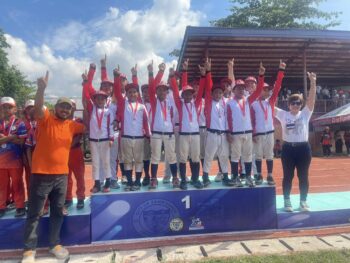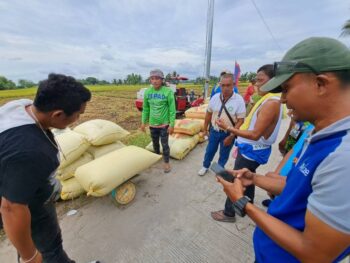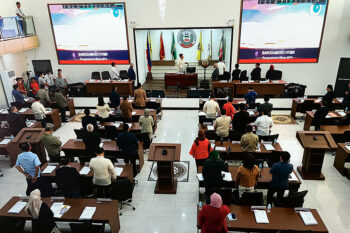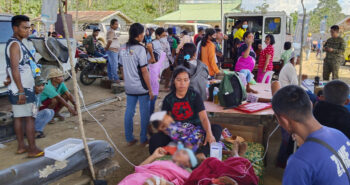GENERAL SANTOS CITY (MindaNews/12 October) – While the communist movement continues to make inroads in the countryside, its cadres have, up to the present, never come close to approximating the strength of its 1980s united front and open mass movement works.
Many were alienated by the divisive ideological debate which came just as the wounds of the anti-Zombie campaign were healing. When the Underground Left began its “rectification campaign,” the regional leaderships of the CPP-NPA in Mindanao pulled out its cadres from the cities to undergo ideological renewal. Some were obliged, some given orders, to stay in the guerrilla fronts to help rebuild its army and party organs.
It left a vacuum in the cities and urban centers whose remaining cadres were organizationally and politically challenged to lead the urban mass movement.
Except in areas where they found reliable and trusted allies in local government units, the communists have found urban mass work a head-splitting challenge.
The student movement is now in the doldrums and former activists in that ’80s era could only wish those glory days of student activism would again come alive.
The labor movement lost much of its strength and the number of unions it leads and under its influence is now reduced to insignificance – a trend that is today prevalent in the trade union movement in Mindanao. When the Herrera Law (Republic Act 6715) was passed in 1989, it became a matter of time when unions were eventually busted. Now, with “contractualization” becoming the norm of labor arrangement, trade unions have lost their strength and bargaining power. Even the Trade Union Congress of the Philippines (TUCP), to which former Sen. Ernesto Herrera, author of RA 6715 is a ranking officer, has not been spared.
But weak as they are in the urban centers, the NPAs have become a formidable force, some say annoying force, to reckon with in the remote and mountainous areas of Mindanao where government presence is hardly felt and services virtually non-existent.
They also greatly benefited from successive wars of attrition launched by the government against the Moro Islamic Liberation Front (MILF) and the emergence of the Abu Sayyaf Group as national security threat at the time they were slowly trying to rebuild their forces in the same manner that the Moro rebel group also crept its way into a force to reckon with during the height of communist activities in the ’80s.
The modern Mindanao conflict is no longer, and never was, the monopoly of the Moro rebellion.
But both conflicts are as real and as problematic as they come.
Spread thinly
The military, while somehow able to shed some of its feared image as the hatchet men of Marcos-era Martial Law, is now spread out too thinly. It had to sacrifice some areas to concentrate where the large formations of rebel forces are, both the MILF and the NPA.
The Surigao raid occurred 12 days after the 30th Infantry Battalion was pulled out from the area for retraining.
Already thinned out, the Philippine military battles multiple warfronts in Mindanao.
Unlike the MILF which still has huge encampments and with which the Philippine government has a still operational ceasefire, the CPP-NPA is still the same guerrilla force operating with its own geographical regions.
It requires the Philippine military to deploy its forces farther away from military nerve centers.
Today, half of the 120,000-strong Armed Forces of the Philippines is deployed in Mindanao. Half of the AFP units in Mindanao however is solely dedicated to containing the MILF and the Abu Sayyaf – the 6th Infantry Division based in Maguindanao and the 1st ID based in Zamboanga. This leaves the other army divisions, the 10th ID based in Davao City and the 4th ID in Cagayan de Oro City, stretched out thinly in far larger areas where the communists are operating.
There are more or less 50 Philippine Army battalions in Mindanao, excluding the Philippine Marines and other support units.
Since fluidity is the name of guerrilla warfare, the military is limited in terms of using its vast and superior war materiel advantage over highly mobile NPA units.
Somewhere in the countryside, it is a deadly cat and mouse game.
Muscle flexing
As one Mindanao local chief executive said, “Certainly there was an element of public relations in the release of Mayor Henry Dano of Lingig, Surigao del Sur and his two military escorts, as well as of four jail guards last Saturday, by the New People’s Army (NPA).”
The release came just days after the Philippine police and military were embarrassed by the Surigao raids.
If what happened last week in the communist insurgency front were indeed mere propaganda, then the government lost heavily.
There is, however, more to these NPA offensives than just public relations and propaganda.
That communists were able to do both – the raid and release of their “captives” with relative ease and without suffering any casualty – only serves to highlight how far the communists have regained their lost bearings.
Whether these offensives were meant to exact reaction from the Philippine government to release consultants of the National Democratic Front who are now in detention, it remains to be seen.
That these happened just as the NDF and the Philippine government are about to resume the peace negotiations in Oslo, Norway next week, serves notice to everybody that beyond the Moro conflict, there is one other lingering and resilient rebellion in Mindanao – one headed by the CPP-NPA and its political umbrella, the NDF. (Edwin G. Espejo writes for www.asiancorrespondent.com)







